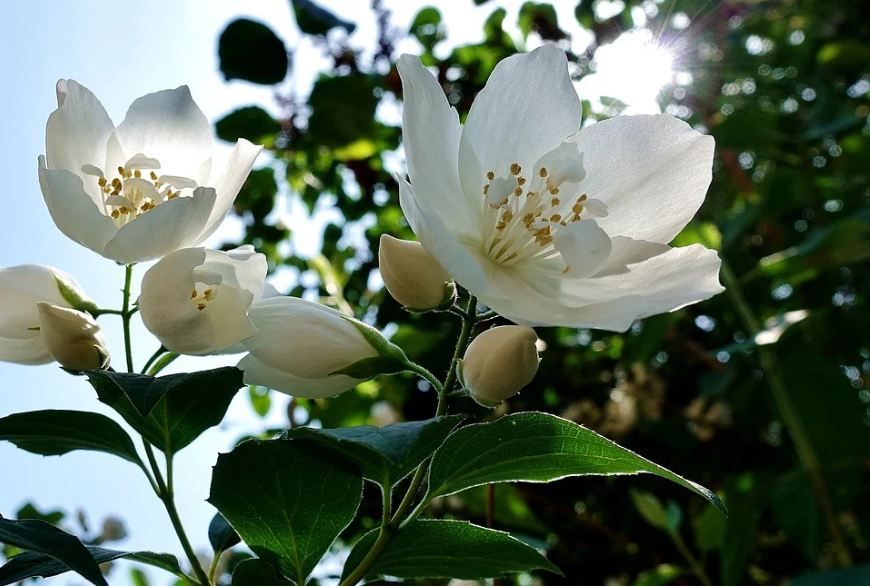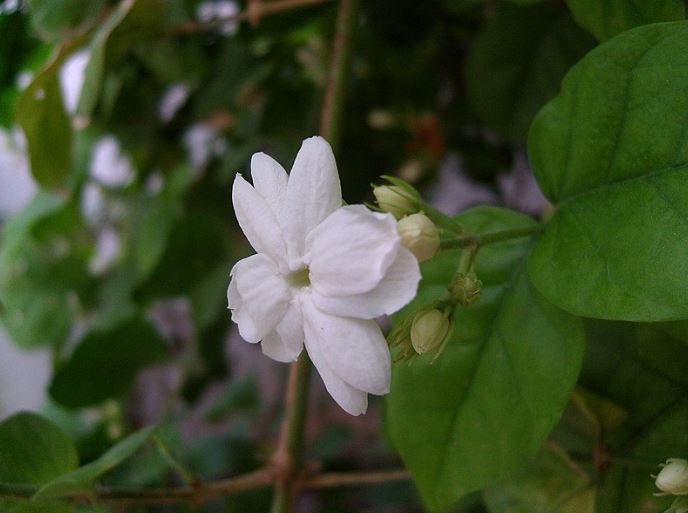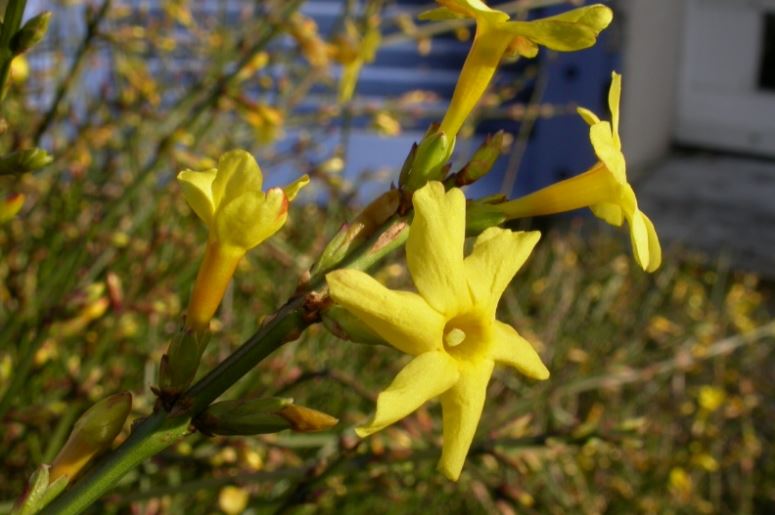Jasmine, taxonomically known as Jasminum, is a genus of sweet-scented flowering plants in the olive family (Oleaceae). With over 200 different species, this genus is famous for its exotic fragrance and dainty, silken blossoms, which add to its ornamental value. It thrives in the tropical and mildly warm regions of Eurasia, Australia, and Oceania, where most species bloom all year round with white, yellow, or occasionally red flowers. It can grow to either climb upwards and from vines or provide ground cover as shrubs.
Although jasmine is an outdoor plant, you can also grow it in a pot or hanging basket as a houseplant.
This exotic bloom demands quite some effort from your side to thrive: it requires basking in the sunlight and well-drained, fertile soil to blossom. Although growing jasmine can be a bit high-maintenance, the result is undoubtedly worth every second and ounce of energy spent. You might be nervous if you are a novice at gardening, planting jasmine for the first time.
We have prepared the ultimate guide on jasmine with tips and tricks from expert gardeners to help you grow the most exquisite bloom that will steal the eye of every neighbor and perk up your lawn!
Everything You Need to Know About Jasmine
Physical Description
The tropical species of jasmine has copious foliage that can be classified into two types: deciduous and evergreen. In deciduous species, the leaves fall in the autumn season, while in evergreen species, the leaves remain all year round.
Most species have dark and glossy leaflets, but some also have simple leaves. The genus is characterized by erect twining stems that climb to form vines and shrubs without tendrils. The leaves grow in opposing directions in simple, trifoliate, or pinnate groupings. It gives small white, cream, or red flowers that blossom in summer and winter.
The flowers either grow solitarily at the end of branches or arrange themselves with at least three other flowers to form cymose clusters. All flowers have four to nine petals arranged in a star shape with a sweet lingering smell distinguishable from even a mile away. Most species are hardy enough to be grown up a fence or wall; however, others are too delicate and should only be grown indoors. Its fruit is a two-lobbed berry that turns black when ripened.
Species of Jasmine
Jasmine has over 200 species, most of which grow as vines; however, some varieties can be grown as shrubs and ground cover as well. Most species are native to Euroasia and Oceania, but now they can be grown in warm temperatures anywhere around the globe.
Different varieties have different features, such as the vigor of fragrance or color of flowers; they also have different caring needs. Therefore, it is imperative to know the characteristics of various species before deciding on one to adorn your garden.
Below we have listed the three most commonly grown Jasmine species and their respective distinct features:
1. Common Jasmine (Jasminum Officinale)
Common Jasmine is a deciduous climbing vine native to Iran, Burma, and China. It is an evergreen twining climber that bores clusters of snowy, star-shaped flowers. The flower buds have a pinkish hue, appearing at the end of winter and the wake of spring. These pink flower buds start blooming into impeccable white flowers in late spring and continue until the start of autumn.
They arrange themselves in clusters, with each flower having about five petals and measuring about one inch in diameter. The flowers are heavily scented and are, therefore, the source of Jasmine essential oils.
The dense foliage of this species displays fuzzy pointed leaves that form a pinnate formation on the stems. It features five to nine leaflets, each measuring about two and a half inches in length.
White Jasmine is a rapidly-growing vine that can climb up to a height of thirty feet in little time, taking as much room as fifteen feet in width. Due to its vigorous climbing habit, it is the perfect choice to ornate your fence, pergola, arbors, or trellis. You can also plant it as a shrub or low-growing ground cover plant to let the sweet smell waft around the whole yard.
Common Jasmine is resistant to pests and diseases, so it does not need much care; however, it requires regular trimming to keep the growth under control. Although it typically blooms in summer, Common Jasmine can flower at other times under controlled conditions in a greenhouse. They are often grown this way for commercial purposes in perfumery and aromatherapy.
2. Arabian Jasmine (Jasminum Sambac)
This species features a creeping evergreen plant that thrives in tropical climates and is native to the Arabian Peninsula. It is the national flower of both the Philippines and Indonesia. It grows well in zones nine to twelve; however, it is labeled an invasive species in Florida.
Arabian Jasmine is prized for being the main ingredient of jasmine tea; however, it also has a lot of ornamental value. It has dark-green glossy leaves that make a beautiful contrast against the vivid blossom of white flowers. About three to twelve flowers arrange themselves in a cluster, each flower about one inch wide.
The flowers shed their impeccable white color and turn a pinkish hue as they reach maturity. They are extremely popular in Hawaii for lei-making.
The Arabian Jasmine grows impressively for a climber, reaching heights of about ten feet when fully matured. You can also plant the dangling vines to provide ground cover where they stretch out to form a veil of lush snowy flowers in the summer. The shrub can grow over ten feet tall as well and provide an evergreen embellishment to your yard.
3. Winter Jasmine (Jasminum Nudiflorum)
Winter Jasmine is known for its eye-catching yellow blossoms native to China. It is named Winter Jasmine as its striking flowers bloom in wintertime. It features a deciduous shrub that thrives best in Mediterranean climates. It is best suited to zones six to nine.
You can grow Winter Jasmine as a low-lying shrub to provide ground cover or a trailing vine to cascade over fences or trellises.
As a shrub, it can sprawl up to a height of four feet with a bushy appearance. On the other hand, provided you choose to grow Winter Jasmine as a vine, the creeping stems can stretch out to be as long as fifteen feet tall.
Unlike most species, winter jasmine features yellow-hued flowers that can liven up any yard with their brightness. Its dark green dense foliage and erect stems further add to the splendor and appeal of this plant. However, the flowers are mostly unscented.
Winter Jasmine stands out from other species because it blooms in the late winters, adding vibrancy to the yard when it is drained of life and color. It is also an ideal choice to prevent soil erosion, so farmers plant it near river banks and slopes. It does not twine like other Jasmine species, so Winter Jasmine requires more care, with trimmings more often.
4. Primrose Jasmine (Jasminum Mesnyi)

Primrose jasmine is a flowering plant from the Oleaceae family, native to Vietnam and southern China. It is also believed to originate in Mexico, Honduras, and parts of the United States such as Florida, Georgia, Alabama, Louisiana, Texas, and Arizona.
This evergreen shrub grows up to 10 feet tall and 3-7 feet wide, with fragrant yellow flowers in spring and summer. The traditional method of cultivation has double flowers. It can be planted as small clicks with proper support, but standard pruning will be regularly required in confined spaces.
5. Italian Jasmine (Jasminum Humile)
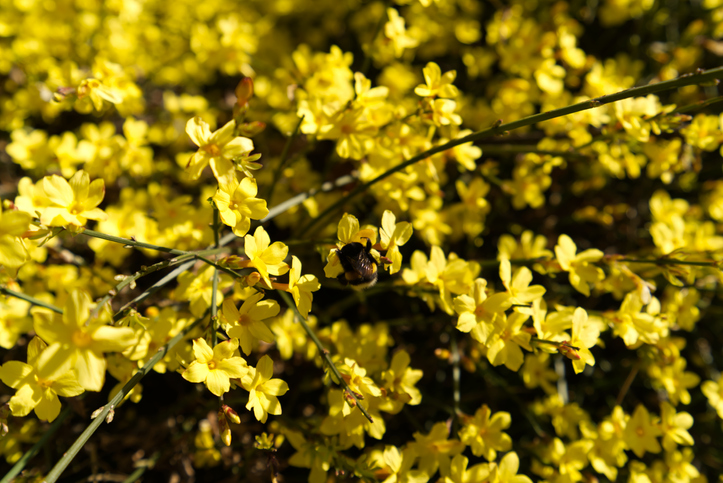
Italian jasmine actually came to Italy through the native range of South Iran to Asia to Central China. Many farmers plant Italian jasmine trees in the summer to produce a small flower that attracts bees and hummingbirds. These yellow flowers grow into autumn blackberry berries in the May and June waves. Italian jasmine flowers grow in small quantities in summer and fit well with the green leaves that stay in the tree all winter in a cool place.
These Italian shrubs thrive on regular watering throughout the summer. In 5-10 years, they grow up to 12 to 15 feet tall.
6. Spanish Jasmine (Jasminum Grandiflorum)
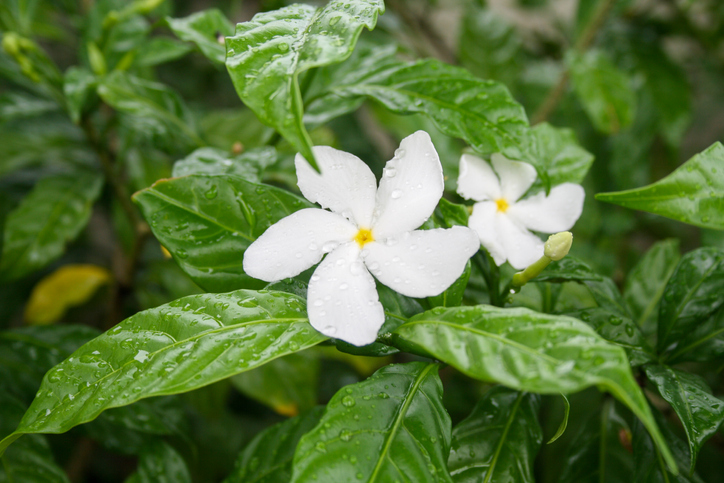
Jasminum grandiflorum, Spanish Jasmine or Royal Jasmine, is a genus of jasmine native to South Asia, the Arabian Peninsula, East and northeast Africa, and China’s Yunan and Sichuan regions. Its opposite leaves are 5-12 cm long and have 5-11 leaflets.
Each flower is white with a 13-25mm long basal tube, and five lobes of 13-22mm long are produced in open cymes. The scent of flowers is unique and beautiful, and it is widely used around the world. These varieties are widely grown and are native to Guinea, the Maldives, Mauritius, Reunion, Java, and Cook Island.
It is closely related to and is sometimes misunderstood for Jasminium Officinale.
7. Flowering Jasmine (Jasminum Floridum)
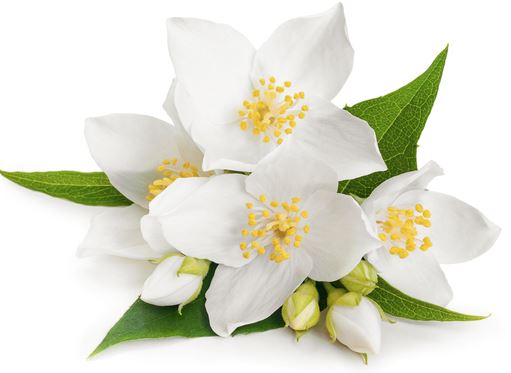
This plant is drought-tolerant, tolerant of partial shade, grows well in bare soil (good in clear areas), grows fast, and has no significant pest or disease problems.
Liked this guide on jasmine? You might want to check out our Guide to Sunflowers.
How to Plant Jasmine

Contrary to what most people say, planting jasmine is very easy. Follow the steps listed below to bedizen your yard with perfectly blossomed Jasmine flowers:
- The first and most significant step is finding the perfect location for your plant. All Jasmine species thrive in full sun to partial shade. Summer-blooming species prefer to bask in the sunlight for long periods, while some species like the Winter Jasmine will do better in partial shade. Overall, a warm, sheltered spot with enough sunlight is ideal for planting any Jasmine species.
- The next step is preparing the soil. Jasmine flourishes in well-drained sandy soil that is moderately fertile and moist.
- If you wish to grow a twining vine variety, you will need a support structure to allow the plant to climb. A fence, arbor, or trellis fulfills this purpose very well.
- If you want to grow shrubbery, plant each Jasmine bush at least eight feet apart to avoid overcrowding. The Jasmine bushes have a rapid root growth and can be suffocated if overcrowded.
- Finally, dig a hole deep enough to keep the plant at the same level in the soil as it was in the nursery pot.
How to Care for Jasmine
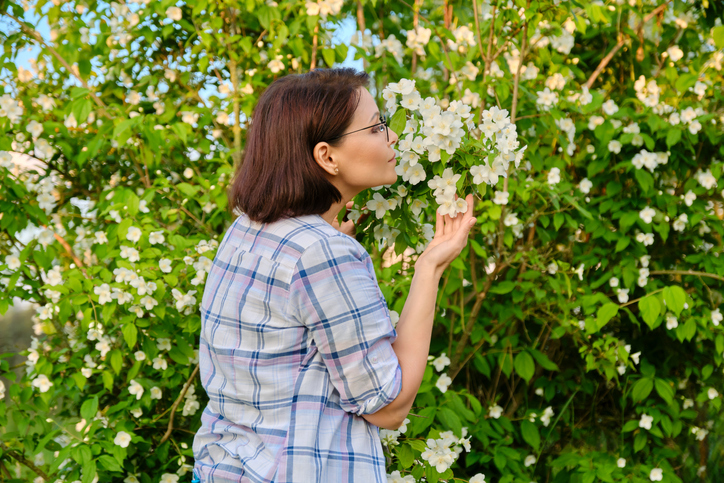
Jasmine is a high-maintenance plant that requires some time and attention to flourish. You can care for your plant and promote its health by following these simple steps:
- Water your in-ground plant once every week as jasmine fares well in slightly moist soil. However, make sure it is not soggy. If the sun is too high or the air is too dry, increase the frequency but let the soil dry between each watering.
- If growing a vine, loosely tie the stems to the support structure to train the plant.
- If growing as a ground cover, regularly trim any stems that twin upwards.
- Enrich the soil with potassium and phosphorus-rich fertilizer twice a year to ensure robust growth. You can also spray liquid fertilizer every few weeks during the summer season.
- Prune after planting to keep the growth under control and prevent the spread of any disease. Jasmine can outgrow its original planting space; therefore, it is essential to prune regularly to train the plant into your desired shape and promote lush tidy foliage.
The Takeaway
The dainty, sweet-smelling flowers of jasmine are the ideal option to enhance the appeal of your garden. With little care, you can achieve copious foliage and snowy, star-shaped flowers with a fragrance that enchants your surroundings. So, what are you waiting for? Get your gardening gear and plant jasmine in your garden today!

